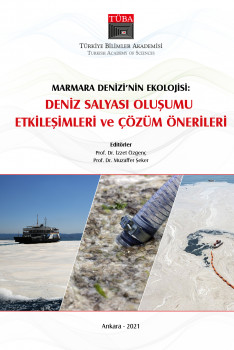The Sea Snot Outbreak in The Sea Of Marmara: Biogeochemical Transformations of The Sea, Modern-Day Pressures and a Roadmap for The Way Forward

The Sea Snot Outbreak in The Sea Of Marmara: Biogeochemical Transformations of The Sea, Modern-Day Pressures and a Roadmap for The Way Forward
The Sea of Marmara is a two-layer marine system where a strong halocline at 25- 30 m separates the low salinity Black Sea waters from the denser Mediterranean waters. Historical data sets of IMS-METU obtained by R/V Bilim-2 showed that surface waters of the Marmara Sea are highly enriched by organic matter and nutrients leading to deep water hypoxia. Hypoxia have been developing in the sub-halocline waters of the eastern Marmara Sea due to the respiration of the eutrophication-derived organic matter. The development of eutrophication is caused by the excessive nitrogen and phosphorus inputs which also represents the root of the problem leading to the 2021 mucilage outbreak. The results of the MARMOD Project led by METU, funded by Ministry of Environment and Urbanization, indicated that anthropogenic and natural nutrient sources adversely affects Marmara Sea marine ecosystem and the contribution of terrestrial nutrient inputs are much greater than the Black Sea surface inflows. Model results indicate that if the terrestrial nutrient (N, P) sources decrease by 40 percent, deep water hypoxia may shift to above-threshold conditions within the next 5-6 years. This effort is only possible with a holistic approach involving nutrient load reduction in all types of inputs to the sea.
